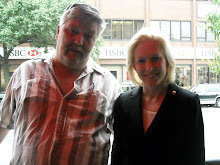Mayor Michael Bloomberg made small schools a central part of his education reform program and has committed the city to opening at least 250. In contrast to traditional high schools that sometimes have more than 3,000 students, the new schools have a target size of fewer than 500. That allows them to bring down class size as well. The goal is to create an intimate learning environment where course offerings are both novel and rigorous and every student knows every teacher.
Critics worry that the new schools would handpick the most desirable and most easily educated students, leaving behind children with special needs or limited language skills. But the city insists that more and more of those students would be included as the schools build their faculties and capabilities. The city will need to make good on that promise.
When it comes to graduation rates the new small schools are already a clear improvement. Schools in poor neighborhoods that once graduated less than half of their students are now seeing graduation rates of 80 percent or even 90 percent. The city, which calculates its overall graduation rate at 60 percent, still has a long way to go, especially in impoverished, minority communities. But the data so far suggest that the small school movement is at least part of the solution.



























